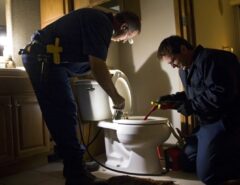Consistently cleaning your home’s roof, siding, and gutters is much more than improving curb appeal. These surfaces face constant exposure to the elements—rain, wind, sun, and airborne contaminants—putting them at increased risk for algae, mold, mildew, and debris buildup. Over time, even a thin film of grime or moss can compromise the performance and lifespan of roofing shingles, siding panels, and gutter systems. Waterlogged or moss-covered roofs may develop leaks or rot, while clogged gutters often lead to overflows that saturate your foundation and invite pests.
Elimination of these risks is one of the main reasons homeowners regularly invest in cleaning solutions such as pressure washing or soft washing. Both methods use powerful streams of water—and, at times, eco-friendly cleansers—to remove dirt, mold, green stains, and streaks from stubborn surfaces. Regular maintenance doesn’t just stop issues before they start; it can help you spot minor signs of damage early, making preventive repairs possible and often saving thousands on costly fixes that develop when problems are overlooked.
Ideal Cleaning Frequencies
Establishing a solid exterior cleaning schedule is key to avoiding overgrowth, decay, and blockage. While each property is unique, expert advice offers sensible starting points for most structures:
- Roof Cleaning: For most homes, scheduling a professional or DIY roof cleaning once a year will effectively prevent moss and algae, particularly in shaded or forested settings. If tree debris or black streaks are common, consider bumping up to twice per year. Take a slower approach for delicate roof materials, opting for gentle methods like soft washing to avoid granular loss.
- Siding Cleaning: Siding should be washed at least annually, but homes in areas with lots of moisture, dust, or industrial pollution might need bi-annual washes. Regular cleaning removes pollution, pollen, and insects, which can diminish vinyl, wood, or fiber cement’s color and surface integrity over time.
- Gutter Cleaning: Of all three, gutters typically need the highest frequency of attention. At minimum, clean out leaves and debris once in the spring after pollen and seeds drop and once more in late fall before winter arrives. However, if your house has overhanging branches or pine trees, inspecting and cleaning gutters every three months is a smart choice.
Many homeowners find that combining regular cleaning efforts for all surfaces—perhaps as part of a spring or fall maintenance routine—ensures no area is missed and allows for a more efficient, cost-effective approach.
Methods and Tips for Effective Cleaning
Regular cleaning of your roof, siding, and gutters preserves curb appeal and extends the lifespan of exterior materials. Effective methods include soft washing for delicate surfaces and high-pressure rinsing for tougher buildup, depending on the condition and material. Using biodegradable cleaners helps reduce environmental impact while breaking down mold, algae, and grime. Timing is also key—seasonal cleanings, especially after heavy storms or during pollen-heavy months, can prevent buildup and water damage. Hiring a pressure washing company ensures the proper techniques are used for different surfaces, minimizing the risk of damage while achieving a thorough clean. Always inspect for signs of wear or clogs, as early attention can prevent costly repairs.
Signs It’s Time for a Clean-Up
- Dark stains, streaks, or green splotches may be on your shingles or siding.
- Even in small patches, Moss, lichen, and mold colonies can be seen.
- Gutters overflow during rainfall, or you might notice them pulling away from the roof’s edge.
- Streaks or dampness appear on your home’s interior walls, particularly near ceilings or windows.
- Debris can be spotted in downspouts or gutter basins, obstructing water flow.
Don’t ignore these signs—addressing them promptly restores your home’s appearance and prevents potential foundation damage, paint blistering, and pest infestations. Waiting until these issues escalate often results in more extensive and costly repairs.
DIY vs. Professional Cleaning
DIY cleaning is popular among homeowners due to its cost savings and satisfaction. Simple homes can be cleaned with basic equipment, while steep roofs, multi-story homes, or persistent stains require professional cleaning. Cleaning specialists are trained in efficient cleaning techniques, early warning signs, and high-quality machinery. They can blend pressure and soft washing for long-lasting results and minimize accident risk. Many homeowners hire professionals for annual or bi-annual deep cleans and maintain with lighter DIY upkeep.





Leave a Reply